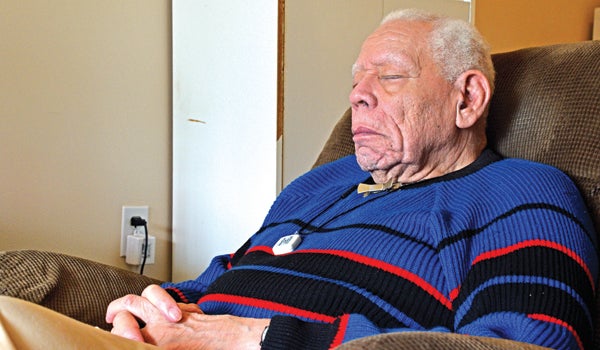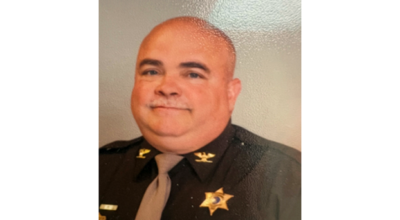Local WWII veteran recalls attack on Pearl Harbor
Published 8:41 am Wednesday, December 7, 2016

- Gerry Hayden, a resident of Brentwood Assisted Living, recounted his story about the start of U.S. involvement in World War II after the attack on Pearl Harbor on Dec. 7, 1941. (Leader photo/JOE KUHARIC)
Gerry Hayden remembers hearing about the attack on Pearl Harbor on a Sunday evening, while he was doing homework.
Hayden, 90, now blind due to age and medical ailments, is a resident at Brentwood at Niles, an assisted living center. He recounts his story from a seat in his wheelchair, with a strong voice and powerfully clear memory.
“I was a 16-year-old student at Central High School in South Bend,” he said. “I had the radio playing. I was in there doing my homework at the dining room table, and I hear this, what I thought was a radio program. I was not paying too much attention. They kept saying Pearl Harbor, and I had never heard of a Pearl Harbor.”
Hayden’s father, a pastor at Olivet AME Church, was at church at the time, and when Hayden asked him about it, he said he had never heard of it either.
The two listened to the radio, and after a time reality set into his father.
“He said, ‘Wait a minute. This is real!’ I said, “Huh?!” Hayden said.
The next day, President Franklin D. Roosevelt gave his famous “a date which will live in infamy” speech, and the U.S. was at war.
It was then that Hayden decided to enlist.
“We all got up and put our books away and went down and tried to enlist — me and all the guys did — just about all of ‘em,” he said. “Of course, I lied and told ‘em I was 17. Because I could enlist with my parent’s permission.”
His father, though, was not as easily convinced.
“He said: ‘You’re gonna finish school, and if they don’t come and get you, you are going to go to college. That was the plan all along, and that’s the plan we’re gonna go with,’ and I said okay,” Hayden said.
Eventually, the military came to get him.
He graduated on June 2, 1943, and on Dec. 17, 1943, was drafted into the U.S. Army.
After Hayden got his draft notice, his father ended his pastorate at the church and enlisted in the U.S. Army as a chaplain. After basic training, Hayden received orders that he was requested to join his father’s unit as a chaplain’s assistant, but it wasn’t a role he wanted so he turned down the assignment.
“I never told my dad until way after we were both out of the service. Years later,” he said.
Instead, he was assigned to the 927th Engineer Aviation Regiment in the Army Air Force and was sent to Guam.
Major Japanese forces had been removed from the island during the Second Battle of Guam before Hayden arrived, but there were still some entrenched in the jungle.
“We had to mop up our area, where we were bivouacked,” Hayden said. “We got shot at, some of us did, and we shot back. I don’t know that I hit anybody or not… We heard some squeals and some hollers, but by the time we got over there they had pulled their dead and dying and wounded back, just like we did.”
While stationed in the Pacific Theatre, Hayden’s unit was responsible for upgrading Japanese built runways to handle American aircraft.
“The 927th, we finished off the runways on Guam and Tinian where the bombers took off to bomb Japan. With the atom bomb,” Hayden said matter-of-factly.
Fat Man and Little Boy weren’t Hayden’s only encounter with atomic devices, however.
Thanks to secret clearance he had gained on a previous mission, he was part of a government Joint Task Force on Christmas Island In spring 1962, where he witnessed the detonation of 26 nuclear devices.
“After World War II, they put a lot of those devices in storage, and the government wanted to find out just exactly what being storage had done to some of them,” Hayden said. “We found out some of them did deteriorate [in power], some of them increased.
“Of course, massive amounts of radiation. When those things go up [who knows] there’s all kinda radiation that goes out from it,” he said. “They said that none of us were affected by it [radiation].”






